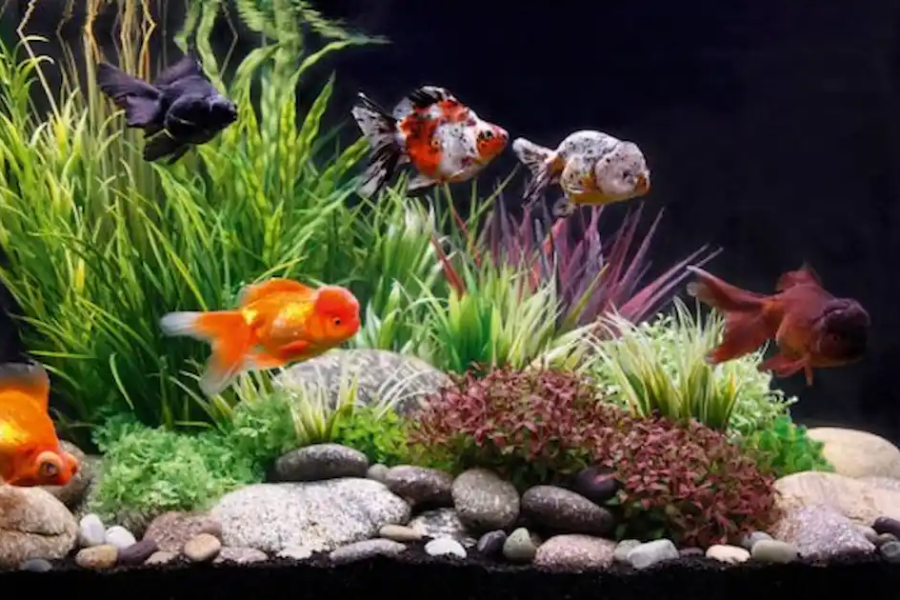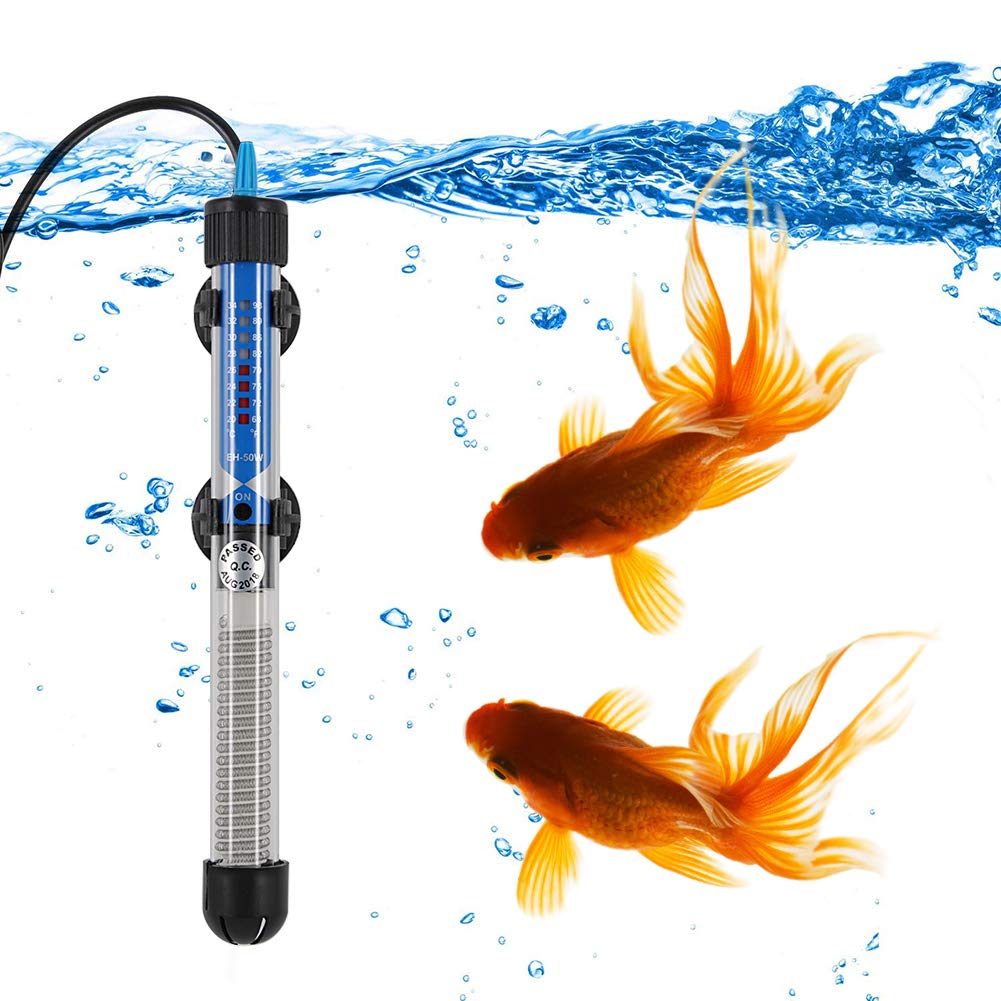
Looking for the best heaters for your goldfish tank is a bit like Goldilocks trying to find the perfect porridge. It can’t be too hot, or too cold, it needs to be just right! And just like our golden-haired heroine, you want the best for your finned friends.
In this post, we’ll swim through the sea of options and surface with our top 5 heaters that would make any goldfish flip its fins with joy. From the compact to the high-tech, each pick has been carefully selected to keep your tank at that perfect, ‘just-right’ temperature. So, dive in, the water’s lovely!
Understanding the Importance of Temperature for Goldfish
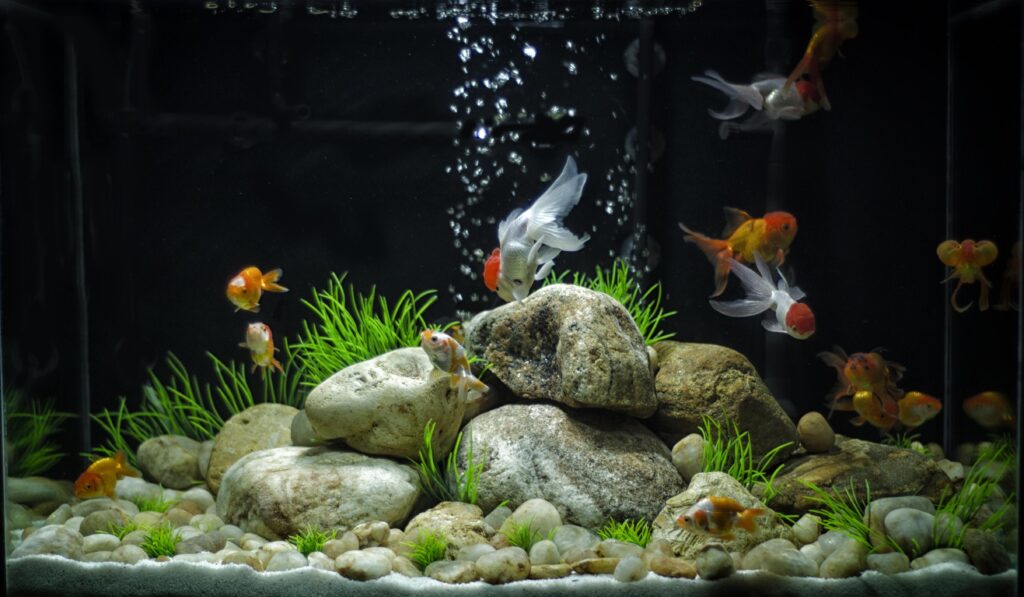
“Ah, goldfish, the epitome of ‘Pets for Dummies.'” But hold on, don’t let their simplicity fool you. Raising goldfish is both an art and science, especially when it comes to keeping their tank at the right temperature.
Why Temperature Matters in a Goldfish Tank?
Peek into a lavish goldfish pad and you won’t see a hot tub. Yes, your fancy finned friends aren’t into thermal spas. You see, goldfish are cold-water fish. But that doesn’t mean they prefer their habitat to chill like the Arctic. It’s not about keeping them cool, but warm and comfy. They need a consistent and ideal water temperature to thrive. You might be thinking, “They are just fish, they’ll survive.” Well, that’s where you’re wrong, buddy. Just like us humans, severe temperature fluctuations can cause serious health issues for goldfish.
Range of Ideal Temperature for Goldfish
Now let’s get a bit toasty with the specifics. The ideal temperature for goldfish? It ranges between 65 to 72 degrees Fahrenheit, and approximately 18 to 22 degrees Celsius if you’re metrically inclined. This isn’t an arbitrary figure I pulled out of a hat. It’s based on what best suits our goldfish gals and guys. Keep your tank within this sweet spot and your fish will be as happy as a clam…err…a fish in warm water.
Temperature check done. But wait, how do we ensure this perfect edible-chocolate-melting temperature in the aquarium? Let’s move to the next part where we talk about choosing the right heater for your royal goldfish tanks.
Choosing the Right Heaters for Goldfish Tank
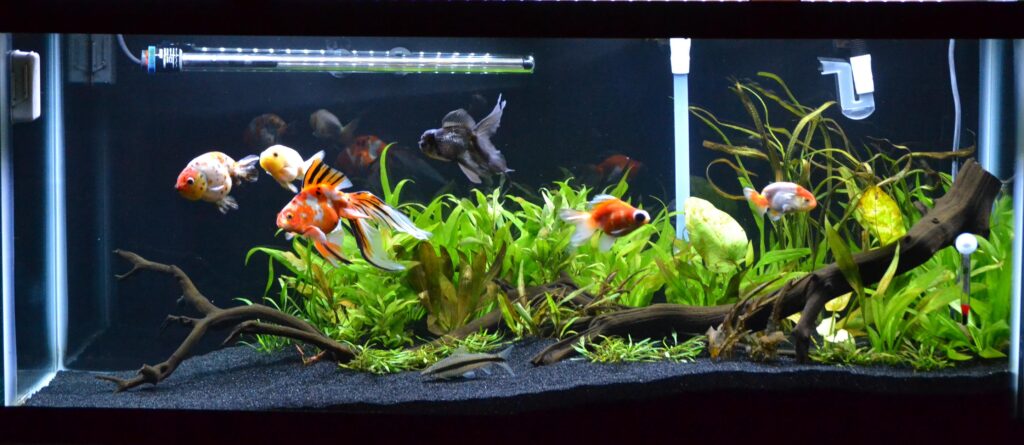
So, your finned friend needs a temperature boost. Fear not, we’re about to get hot under the collar discussing how to select the right heater for your goldfish tank.
Tips on Selecting a Reliable Heater
If you’re expecting a lengthy list of “what-to-do’s”, take a breather! It can be as easy as dunking a biscuit into tea. The first ticket on this ride is research. A heater might promise it can turn your little tank into Goldfish Hawaii. But don’t fall for the shimmering vacation talk until you’ve checked user reviews. Let’s not beat around the bush, reliable brands are your best bet. Companies selling heaters for decades know a thing or two about keeping fishies toasty. Lastly, aim for a heater with a good warranty. Even heaters get the winter blues sometimes.
Now that we’ve dealt with how to choose, let’s heat things up further. Strap in because next, we talk size and wattage.
Heater Size and Wattage
You want size and wattage that go together like peas and carrots. Pick a heater that’s too big and Captain Goldfish could cook up faster than your microwave popcorn. Too small, and you might as well invite Ice Age into the tank.
A traditional rule is 50 watts for every 10 gallons of water. But remember, your living room isn’t a tropical beach. If you live somewhere colder, up the wattage a little.
Just like Goldilocks, it’s about finding what’s ‘just right’ for your goldfish tank. But let’s face it, Goldilocks didn’t have to install anything after finding her perfect porridge…
Keep reading for our handy guide on heater installation. We promise it’s easier than setting up that Ikea desk you bought.
Top 5 Heaters for Goldfish Tank

Before we dive into the specific models, remember to consider the aspects we mentioned before. Size, wattage, and reliability are all factors to keep in mind as you read these reviews. Now, let’s get to it: the best goldfish warmers present on the market!
Orlushy Submersible Aquarium Heater: Pros and Cons
Orlushy heater swims to the top with its water-tight design, fully submersible and with an external temperature control for ease. However, it’s not all smooth sailing. Some users report a fluctuation in temperature readings after some time.
HITOP Adjustable Aquarium Heater: Pros and Cons
HITOP adjusts its position with a robust built-in thermometer and automatic switch-off feature when the desired temperature is reached, protecting your chilly chums from overheating. However, the thermostat readings seem to tide over, leaving some cold fish questioning its accuracy.
Fluval E300 Advanced Electronic Heater: Pros and Cons
Fluval E300 strides into the third spot with advanced tech like a dual temperature sensor and fast heat technology. However, its high cost can create a wave of hesitation for penny-pinching pet owners.
Fluval Ultra-Slim Submersible Aquarium Heater: Pros and Cons
Swimming into our fourth spot is the Fluval’s ultra-slim model. Its sleek design and LED temperature readings are a sight for sore gills. But the size, though attractive, might not generate enough heat for large tanks.
Marineland Precision Heater: Pros and Cons
Lastly, Marineland Precision heater glides in with its precision-focused design. It assures a stable temperature suitable for your goldfish. But, the bulb might get a tad too warm, cautioning pet owners to keep it away from their finny pals.
Ready to take the plunge? But wait, setup and upkeep are vital too. Dive into our next section to learn how to install and maintain your new heater most effectively.
Installation and Maintenance of Heater
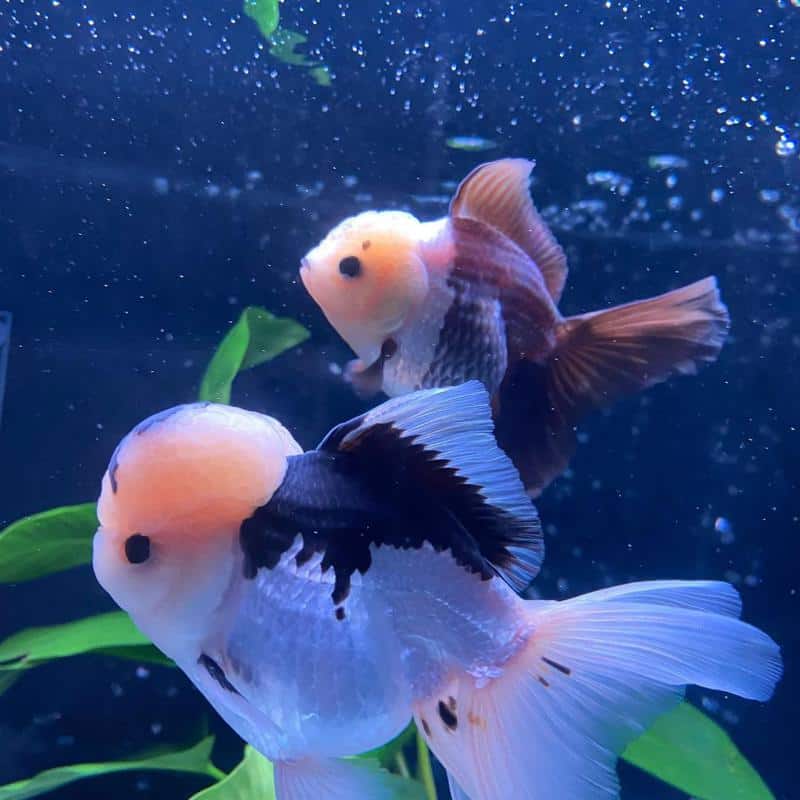
Your goldfish just shelled out for a top-tier heater. They’re a little cold-blooded (yes, that’s a fish humour!), after all. But now what? Are you supposed to just drop it in there like a piranha in a pool party? Fear not, for this section is designed to guide you through the process of proficient heater installation and maintenance.
Guide on Heater Installation
Installing a heater, fortunately, doesn’t need a degree in thermal physics. First step – read the manufacturer’s instructions (Mind-blowing, I know). Next, position your heater near the water flow for even heat distribution. Oh, and remember, the heater should always be underwater. This isn’t a BBQ for your goldfish. Lastly, plug it into a drip loop for safety. Taking these steps can help you avoid a horror movie scenario in your living room.
Up next? The maintenance part. Now don’t start sighing yet, have your faith in us (and your ability to use a screwdriver).
Tips for Heater Maintenance
The good news is that heater maintenance is largely uncomplicated. Firstly, always unplug the heater before touching it, unless you have a fancy for electrocution. Regularly wipe it down to avoid mineral build-up. This might sound like a chore, but believe me, your goldfish will thank you for it (or at least, it would if it could…we’re working on that). And finally, keeping a vigilant eye for changes in your fish’s behavior will alert you to any potential heater failures.
And there you have it folks, a complete guide to heater installation and maintenance. Told you it wasn’t rocket science. In the next section, we’ll continue our journey by delving into the rewarding realm of heater safety precautions. Stay with us, friends, you don’t want to miss out.
Safety Considerations When Using Heaters for Goldfish Tank
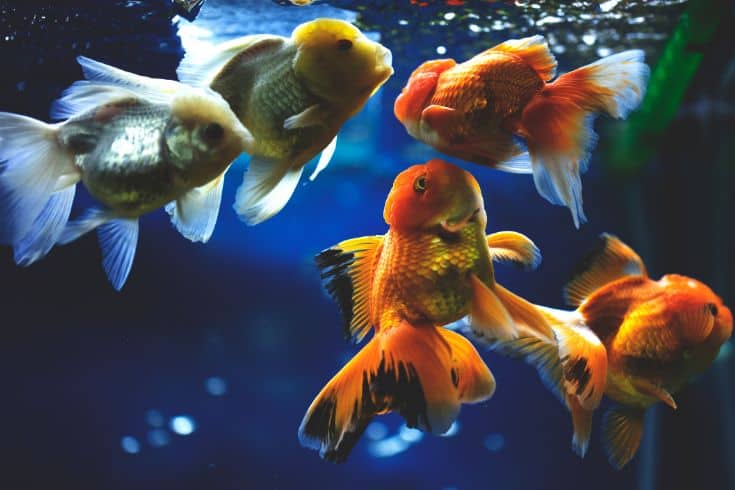
You might be thinking: “A heater for my goldfish tank? Isn’t that just another accident waiting to happen?” Well, my friend, you’re spot-on. Safety should always come first! Dogs might be man’s best friend, but for goldfish—we’re their lifeguard. So, let’s dive into the necessary steps to keep our little swimmers safe and sound.
Preventing Heater Accidents
We should always play it safe rather than sorry. And when we’re talking about fish, water, and electricity—it’s no joking matter. Always remember to unplug the heater when making water changes in your tank. Picture this: If you don’t, the heater could become exposed, overheat, and—bam! Crack! Plus, a dry heater might also lead to a burnt Finn (we named your goldfish Finn, just for fun) and let’s be honest, nobody wants a toastie on their conscience.
What to Do in Case of Heater Failure
Even if you’ve got a black belt in fish tank safety, things can still go south—fast. Heater failure might mean a cold dip for your fish or an overheated jacuzzi. If your heater fails and the tank temperature is swinging more than a pendulum, unplug the heater, scoop your fish out and place them in a safe container with tank water. Then, rush to the nearest pet store (or Amazon Prime if that’s more your speed), and nab yourself a new heater.
And remember, folks, always double-check that the heater you’re purchasing is suitable for your goldfish tank. Now that we’ve talked about safety let’s explore some do’s and don’ts of heater maintenance and installation. Because, let’s face it, we’d do anything for Finn and his buddies, wouldn’t we?
Wrap Up
Maintaining the right temperature in your goldfish tank can greatly enhance the longevity and wellness of your finned friends. When it comes to overseeing the temperature, selecting an efficient heater that aligns well with the size and needs of your setup is crucial.
The top 5 heaters reviewed offers a range of choices to cater to different requirements, but regardless of the choice, proper installation and regular maintenance is vital. Prudent safety measures can prevent accidents and help in dealing with potential heater failures, thereby ensuring the comfortable habitat for your goldfish. Remember, your goldfish aren’t just pets, they’re family!
Frequently Asked Questions (FAQ)
Question: Why does temperature matter in a goldfish tank?
Answer: Goldfish are coldwater fish but need a stable temperature to thrive. Too much fluctuation can cause stress and pave the way for diseases.
Question: What is the ideal temperature range for goldfish?
Answer: The ideal temperature range for goldfish is generally between 20-23 degrees Celsius or 68-74 degrees Fahrenheit.
Question: How do I choose a suitable heater for my goldfish tank?
Answer: When choosing a heater for your goldfish tank, one should consider factors such as the size of the tank, wattage of the heater, reliability, adjustability of temperature settings, and safety features.
Question: What are some safety considerations when using a heater in a goldfish tank?
Answer: To ensure safety, always buy quality products with safety features, avoid positioning the heater near flammable substances, keep it fully submerged to avoid malfunction, and avoid turning it on when out of water, which may cause overheating.
Question: What action should I take in case of heater failure?
Answer: In case of heater failure, your first step should be to unplug and remove the defective heater to prevent potential hazards. Replace it with a new, functional heater as soon as possible to maintain the tank’s temperature. Furthermore, always have a back-up heater for emergencies.



